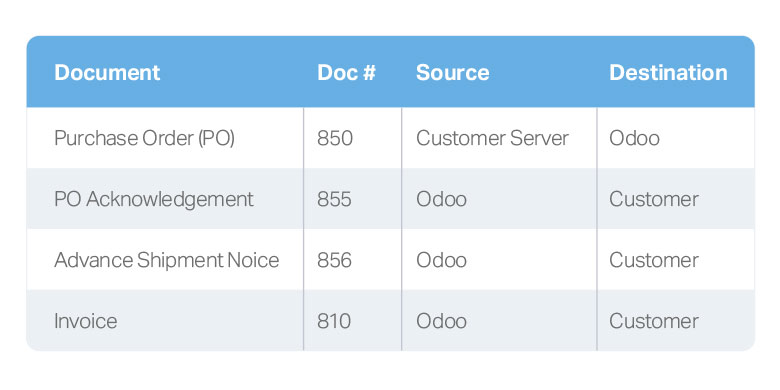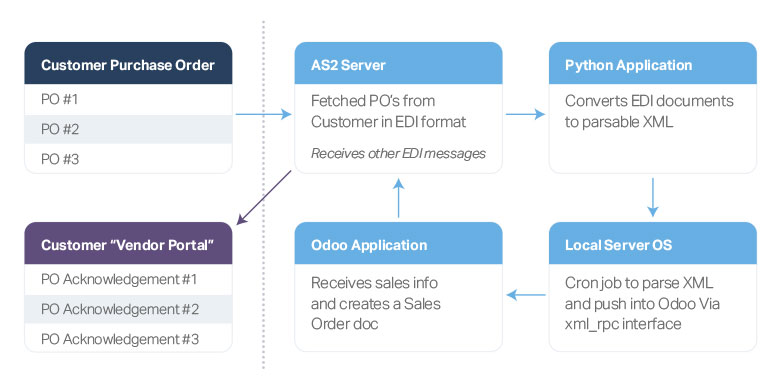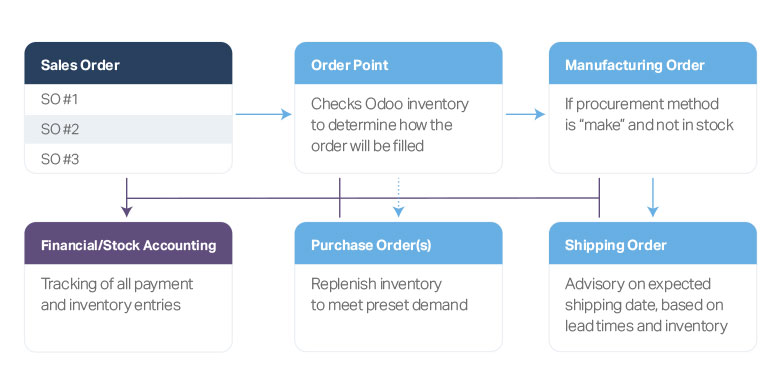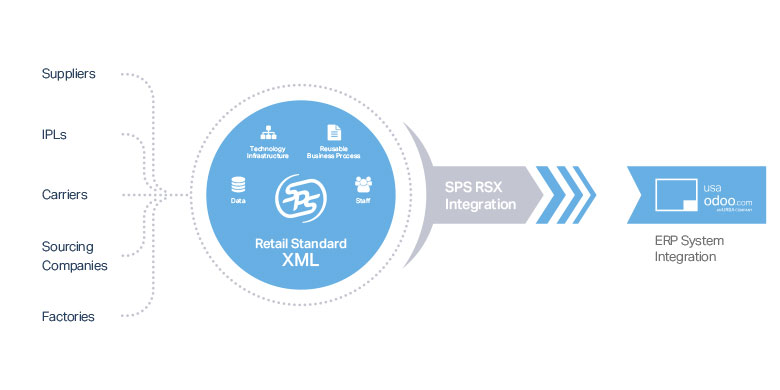Challenges
- EDI “Standards” tend to be more of a starting point, and many flavors of a “standard” document exist.
- There is often little documentation as to proper implementation, and generally poor error handling and messaging.
- Besides the technical challenges, there are business process challenges. If a system is to send or receive EDI messages, it needs to know what business functions are triggered, and what do to. For example, if we are offering a “Make to Order” product for sale via EDI, the receipt of a PO (850 document) should trigger a manufacturing order, a check of the current raw materials inventory, scheduling of manufacturing resources, and ordering of any needed materials not in stock.
- Many EDI implementers do not understand the upstream effects on supply chain. Companies may not have the tools to plan orders or manufacturing correctly, in order to meet their commitments, or alternatively, may order too much, ending up with gluts of inventory or wasted labor or space.
Get the Most Out of an EDI Integration
Your ERP system must be tuned to seamlessly be able to fulfil the orders for your products, reducing labor and waste, and maximizing throughput. All the systems must be working harmoniously, creating a workflow that delivers your product at the highest efficiency.
This is where experience come into play—OSI’s approach is to take a holistic view of the process. While it is important to sort through the technical details of establishing a reliable EDI connection, it is also important to ensure that the manufacturing, purchasing and fulfilment business processes are implemented correctly, in order to maximize the gains of the system.
Given these challenges, OSI can suggest two basic EDI implementation patterns. Let’s examine both of these.
Direct EDI Integration Option
In this option, we will want to create a direct connection between the vendor and the retailer. This is common in many cases, and may be the appropriate choice if one of the parties is unwilling to work with an EDI “middleman” or VAN.

We will automate document flow from a big retailer (“Customer”) to our Odoo using company (“Company”) and vice versa.
- The Customer sends a purchase orders in EDI to the Company.
- The Company has set up a listening server that offers Applicability Standard 2 (AS2) services to capture the purchase orders from the Customer.
- The Company will then convert the EDI into a format that can be ported into Odoo as a Sales Order.
- A sales acknowledgment and invoice will be compiled and transferred back from Odoo in the EDI format for transmission back to the Customer.
The complexity of this procedure centers around setting up the AS2 server and converting EDI into Odoo documents.
The sample workflow from our customer to Odoo and back looks like this:

After these technical matters are completed, we get to the issues of ensuring that your Odoo system is configured to manage the production, fulfillment and accounting of this process.

SPS Commerce EDI Integration
In our example of the previous option, each vendor EDI relationship is customized. The fields for the EDI messages are often quite specific to a particular vendor or customer. This may mean that the EDI connection cannot be easily duplicated for other customer/vendor relationships, and increased maintenance of the existing connections.
Wouldn’t it be nice to work with an organization that would allow your company to take a more general approach to your EDI connection, and they will work out the hard bits of translation, field matching and scheduling? What if they could even give you real time sales analytics back as a benefit?
Open Source Integrators is pleased to provide an approach to Odoo EDI challenges that is simultaneously simpler, and more powerful. Through our strategic relationship with SPS Commerce, OSI can offer EDI integration with the largest retail network in the world.

OSI’s SPS Commerce connector allow companies to use one link (between Odoo and SPS Commerce) that now joins them to 60,000 potential trading partners (retailers, wholesalers and brokers) for order management.
Additionally, through SPS Commerce’s channels, we can request Near Real Time sales numbers back from a number of end vendors, (through an EDI form 852), giving us inventory, sales by SKU, etc., at the individual store level. This gives companies visibility into sell through, stock outs, and overstock situations, as aggregated or granular as one wishes. It is now possible to get Near Real Time measurements of sales by geography, seasonality and allocation/inventory rules, as well as the ability to offer replenishment on call.
This feedback loop profoundly changes the relationship between Suppliers and Retailers.
OSI Solves EDI
Order management is at the heart of your business, and Open Source Integrators can deliver the complete solution for this critical business function.
You and your business can comply with EDI partner requirement in an easier manner than ever before, better predict sales and inventory needs, and ultimately, build the efficient product business you are envisioning.
OSI’s experience and tools deliver the Best in Class implementation that can fundamentally change your approach to order management and sales channels fulfillment and feedback.









